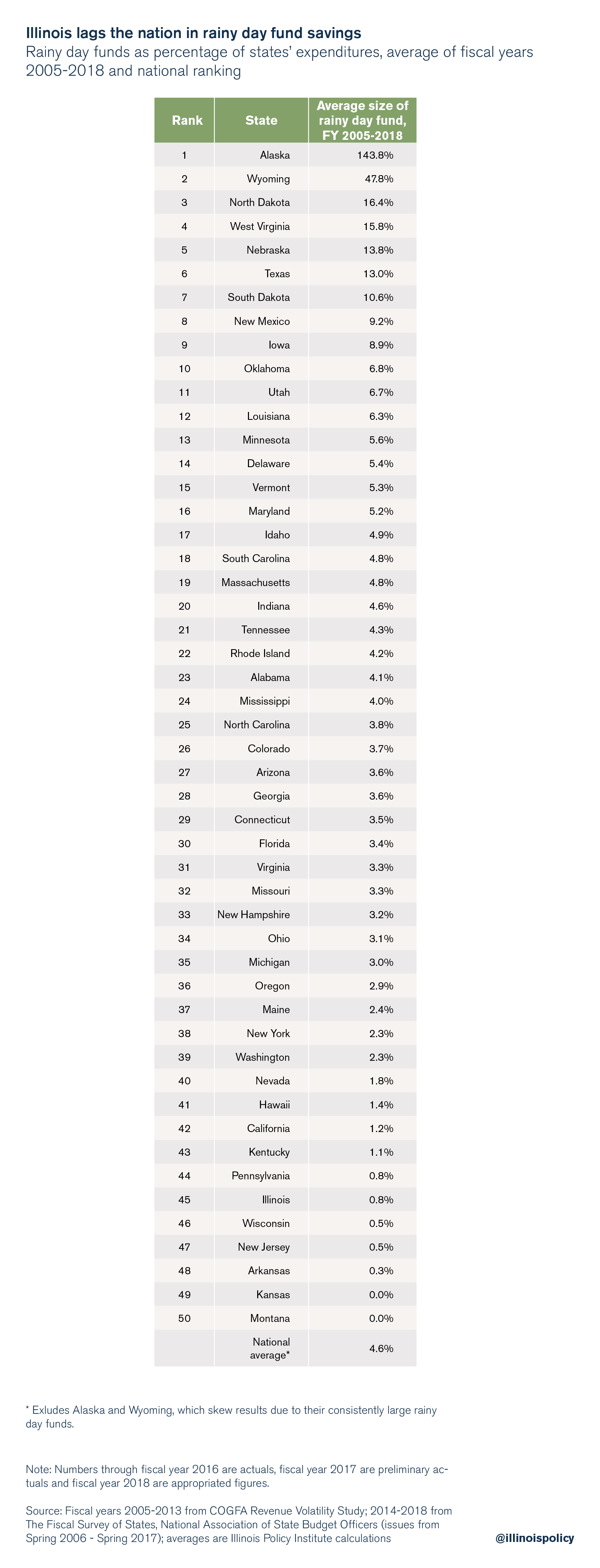Illinois’ rainy day fund would cover only 81 seconds of state spending
The Land of Lincoln's meager rainy day fund would leave the state exposed in the event of another recession.
Illinois lawmakers adopted a $38.5 billion state budget in May, with general fund spending outpacing realistic revenue projections by as much as $1.5 billion.
While this imbalance should give taxpayers pause, it isn’t the only fiscal weakness that exposes the Land of Lincoln to risk.
The Illinois Budget Stabilization fund, also known as the state’s “rainy day fund,” is one of the smallest in the nation, containing just $98,000 as of June 2018. To put this in perspective, Illinois’ entire rainy day fund amounts to just 81 seconds of state spending budgeted for the coming fiscal year.
Rainy day funds are important because they allow state governments to continue funding core services when economic downturns result in lower-than-expected tax revenue. Springfield’s failure to maintain a robust rainy day fund has made Illinoisans severely vulnerable in the event of a fiscal crisis – and lawmakers’ increasing reliance on volatile revenue sources only compounds the state’s exposure to risk.
From 2005 to 2018, the size of Illinois’ rainy day fund on average stood at 0.8 percent of state expenditures. That places Illinois at 45th among all 50 states, and far below the 4.6 percent national average. It’s generally recommended that states’ rainy day funds hold an amount equal to 5 percent of annual revenues – although some recommendations suggest 10 percent of annual revenues.

Illinois’ insufficient rainy day fund is just one consequence of Springfield’s bad budgeting practices, as lawmakers have borrowed money from the fund every year since 2003. Moreover, lawmakers often skirt repayment when borrowing from special funds, such as the rainy day fund, opting instead to “forgive” their special fund debts. To secure Illinois’ rainy day fund, taxpayers should pressure state lawmakers to strengthen restrictions on withdrawals from these funds.
Unfortunately, Illinois’ fiscal year 2017 stopgap budget not only withdrew from the state’s rainy day fund, but it also changed state law so that the fund did not have to be repaid. State law does not strictly enforce limitations on rainy day fund withdrawals, which allows lawmakers to continue dipping into its reserves.
Illinois’ rainy day fund is another victim of the state’s reckless spending habits. From 2005 to 2015, state spending consistently grew beyond taxpayers’ ability to pay, which means lawmakers were pressured to dip into special reserves to cover the shortfall. By adopting a spending cap that ties growth in state expenditures to growth in the state economy, taxpayers could expect a healthier rainy day fund.
Reining in the growth of state spending is fundamental to sustaining a healthy rainy day fund – and protecting taxpayers against fiscal crises.